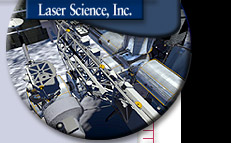
The
International Space Station (ISS) initiative unites scientific and technological
resources of Brazil, Canada, Japan, Russia, 11 nations of the European
Space Agency, and the United States to produce state-of-the-art laboratories
orbiting in weightlessness. American space shuttles and Russian rockets
are making 45 separate missions to carry pieces of the station into
orbit where the astronauts will assemble over 100 parts never attached
on earth. The ISS will host research in life, earth, and space science,
foster commercial research activities in space, and serve as a stepping-stone
for human exploration of the solar system.
Picture
courtesy of NASA. 
Japan’s National Space Development Agency (NASDA) is developing
the Japanese Experiment Module (JEM or Kibo) portion of the ISS. Kibo
will provide a pressurized module for materials processing and life
science research connected by an airlock to an external platform or
“back porch” with a robotic manipulator for exposed or “in-space” experiments.
Kibo will be launched and assembled from 2002 in three separate flights.
Laser Science, Inc., KBK, Inc. in Japan, and their customer, Nissan
Aerospace Division, are working together to develop a space qualified
nitrogen laser for Kibo. It will be used for liquid bridge research
plus heating and cooling studies. Together, we modified and ruggedized
nitrogen lasers to survive temperature extremes and strong vibration
and acceleration forces. Our lasers sailed undamaged through two unmanned
rocket launches.

|




